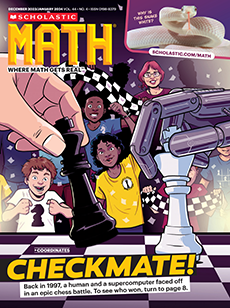Show students a picture of a famous basketball player, such as Dikembe Mutombo. Ask students to guess his height and weight. Then ask: If I told you that he weighs 118 and he’s only 2.18 tall, would you agree or disagree with me? Pause to see if students recognize that the figures do not include the units. Then explain it is true that Dikembe Mutombo’s height and weight measurements are 2.18 meters and 118 kilograms, which are equivalent to 7 feet 2 inches and 260 pounds. Tell students that it is important for them to pay attention to the units used because there are different units of measure used in different situations.
CCSS: 6.RP.A.3.D, MP5, MP6, MP7
TEKS: 6.4H, 7.4E
